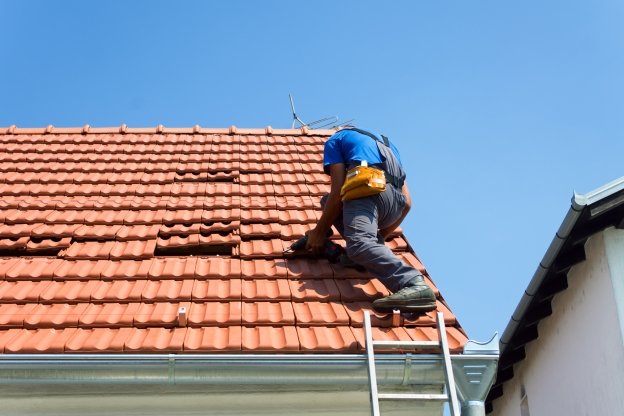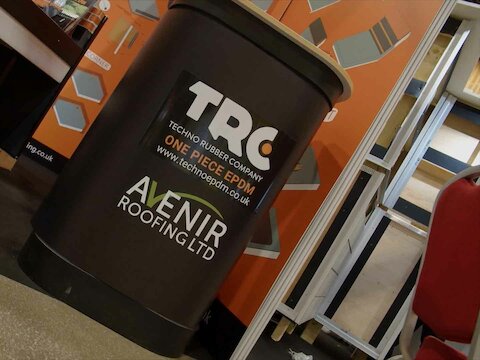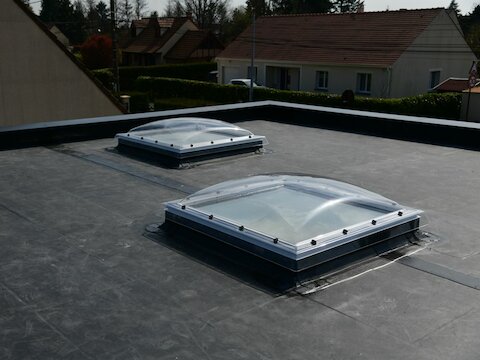Back to Basics: Ladder Safety for Roofers

If you’re a roofer, chances are you’ve spent a lot of your time climbing ladders. Because roofers spend so much time using ladders and working at a height, it is incredibly important that they are fully aware of how to stay safe and it’s always good to get back to the basics and go over some general advice.
So, if you’re in need of some brushing up on ladder safety, Avenir Roofing have put together a checklist of things you can do to maximise safety, with some tips and tricks along the way.
Proper Training
Before you even set foot onto a ladder, it is important that you are confident and have undertaken the correct training for working with that ladder. This will give you the right skills and information to use the ladder safety and appropriately, so that you are kept safe as well as your colleagues and equipment etc.
Ladder Inspection
Another step you should take before you climb your ladder is to carry out a ladder inspection. Checking every part of the ladder before you use it will ensure that there is no damage that could cause the ladder to fail.
Have a good look at the rails, rungs, footpads and any other important components of your ladder. Look for defects or damage and be sure to get any fixed before use. Alternatively, mark the damaged ladder with a sign so that no one uses it. It is also good practice to wipe down any grease, mud or debris that could cause the ladder to be slippery.
Check Your Surroundings
Once you have ensured your ladder is secure, you should inspect your surroundings. Look at where you need to place the ladder and remove any obstacles that are a potential hazard. Look for anything that may threaten the stability of your ladder once it is placed or anything that might cause the ladder to sink or slide. You should also make sure you’re not putting your ladder in front of a driveway or doorway.
Check for wet, slippery or uneven surfaces and remove any loose gravel, leaves or wires. This step is essential for making sure there are no hazards that could stop you from being safe whilst using the ladder.
Placing the Ladder
After checking that your ladder is safe to use, and your surroundings won’t cause you a problem, you can place your ladder. You may need to use a stabilizer bar or ladder mount guard to secure the ladder so that it won’t slip sideways or fall backwards.
If you have checked your surroundings properly, you should have a secure place to put your ladder. If you need assistance angling your ladder, some roofers follow a 1/4 rule. This means placing your ladder one foot out for every four feet in height. For this, you will need to know the height of your ladder, and measure the ground for how far away from the wall to place your ladder.
Climbing the Ladder
There are a few simple rules to follow when it comes to climbing the ladder itself.
- Maintain 3 points of contact between you and the ladder at all times.
- Never carry tools or materials in your hands when climbing up or down.
- Always face the ladder when climbing it.
- Never step on a ladder while someone else is on it.
- Make sure your footwear is clean so that you don’t slip.
If you need to reach sideways while on your ladder, don’t do so hastily, as your bodyweight might cause the ladder to tip. To avoid this, keep your upper body in between the rails of the ladder wherever possible. It is also important to remember that muscle fatigue can cause accidents, so be sure to take regular rest if you need to.
From the Ladder to the Roof
If you are stepping from a ladder to a roof, there are a couple of initial checks you should make. Firstly, make sure there is enough room for you. Then, make sure the surface is sturdy enough to hold your weight. You should also make sure there is no debris on the roof that could get in the way.
For more advice and roofing guides, be sure to check out the rest of our blog.




